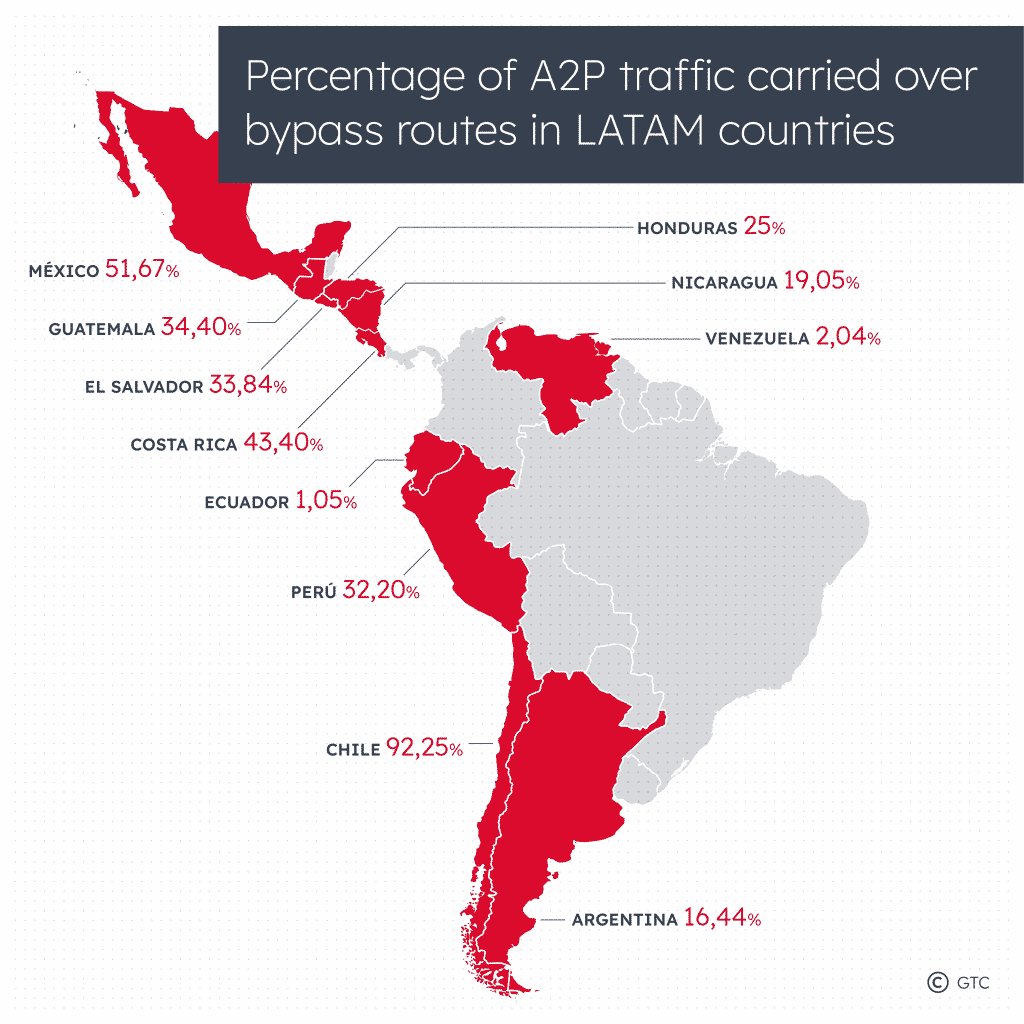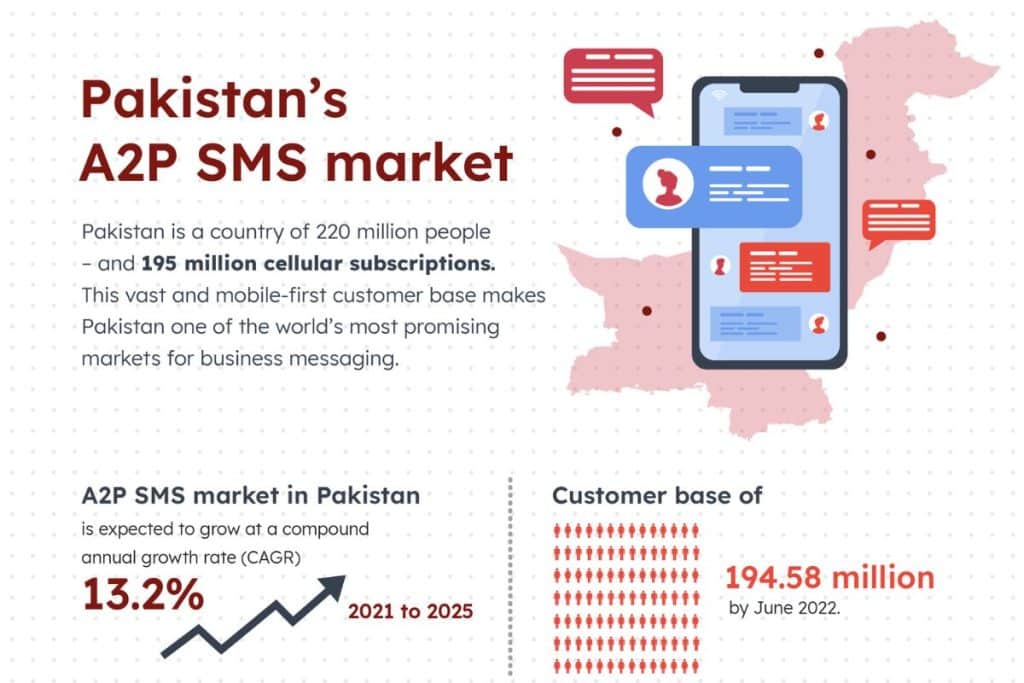In Chile, MNOs miss out on 92.25 percent of A2P traffic. But in Ecuador, just 1.05 percent goes over unofficial channels. Our new study reveals how much revenue MNOs in LATAM are losing to bypass route fraud…
Business messaging is booming across LATAM. In a continent of mobile-first consumers, enterprises are choosing to do their customer care and marketing over SMS. Text is direct, personal and immediate. It beats email, TV and radio (nearly) every time.
But not everyone in the mobile value chain is feeling the benefit. In some countries, mobile operators make barely any revenue from the surging volumes of ‘A2P’ messaging.
Why is this? There’s a simple explanation.
Bypass routes or similarly known as grey routes.
Put simply, a bypass route lets a messaging aggregator deliver messages outside of the regular operator channels. For example, it might buy a stack of consumer SIMs, which offer cheap local rates for sending texts (or even offer unlimited SMS allowances). It will then combine these SIM cards into a single server – called a SIM box – and use it to send business messages at ultra-low consumer rates.
It’s not the only type of bypass route. Aggregators can also avoid the legitimate operator channel by sending SMS messages through SS7 signaling from a third party MNO or MVNO.
In many cases, bypass routes are unreliable. Delivery can be slow and sometimes messages fail to arrive at all. What’s more, these ‘illegitimate’ routes often host spam and smishing traffic.
But how bad is the problem? Here at GTC, we decided to find out. We chose LATAM because regulation, commercial rules and business models vary so much across the region.
For example, we looked at where the regulator does not allow the blocking of grey routes, and compared the data with regions that do more to protect MNOs from bypass routes.
The results were pretty startling. Take two of LATAM’s biggest markets. In Chile, where regulators do not prevent grey route messaging, 92.25 percent of A2P traffic is sent via a bypass route. Neighbouring Argentina, where blocking is permitted, the number is 16.44 percent. In similarly protected Ecuador, just 1.05 percent of A2P traffic goes over a bypass route.
Check out this map to see the impact of bypass route traffic on MNOs in the LATAM region.




